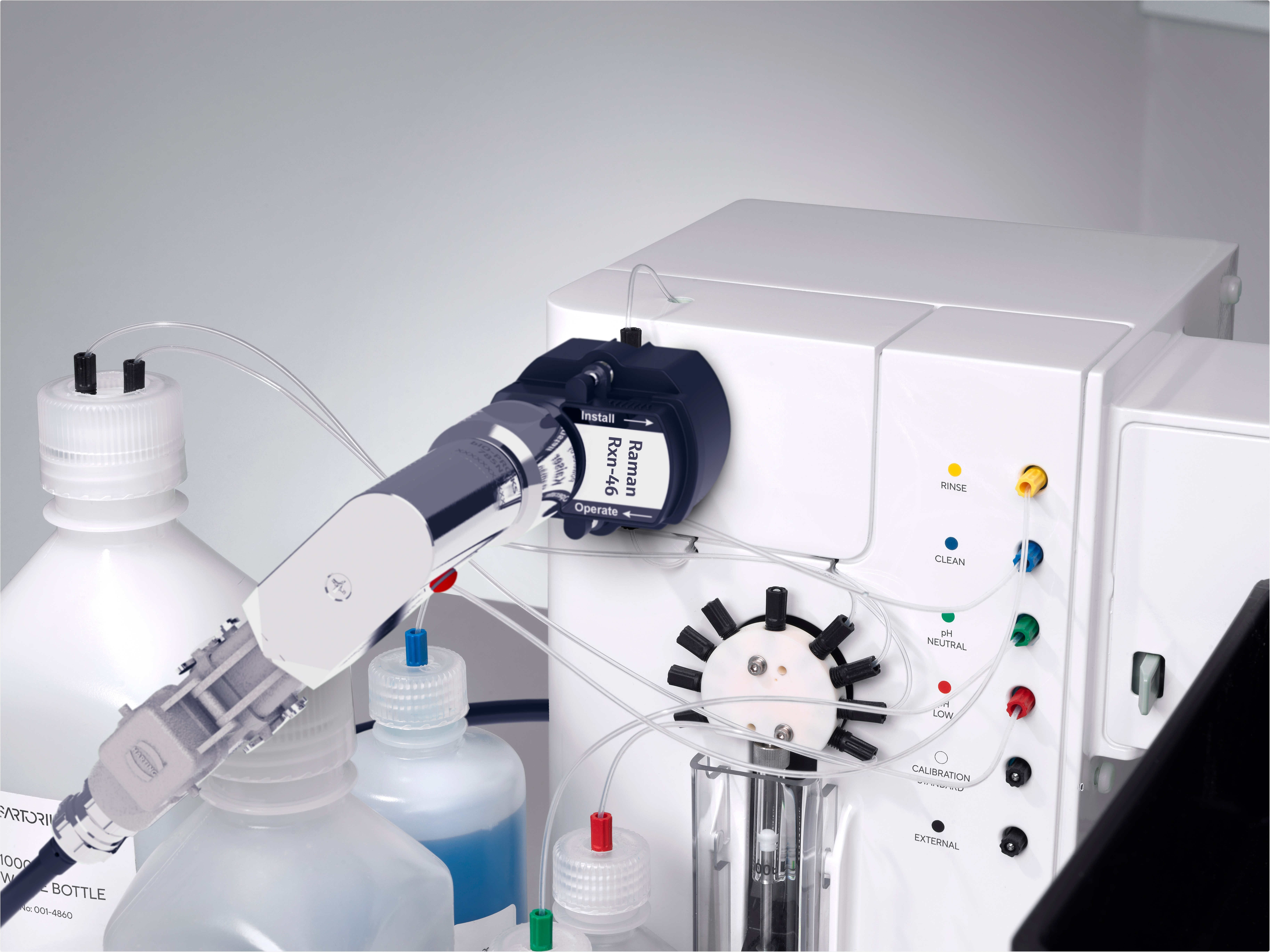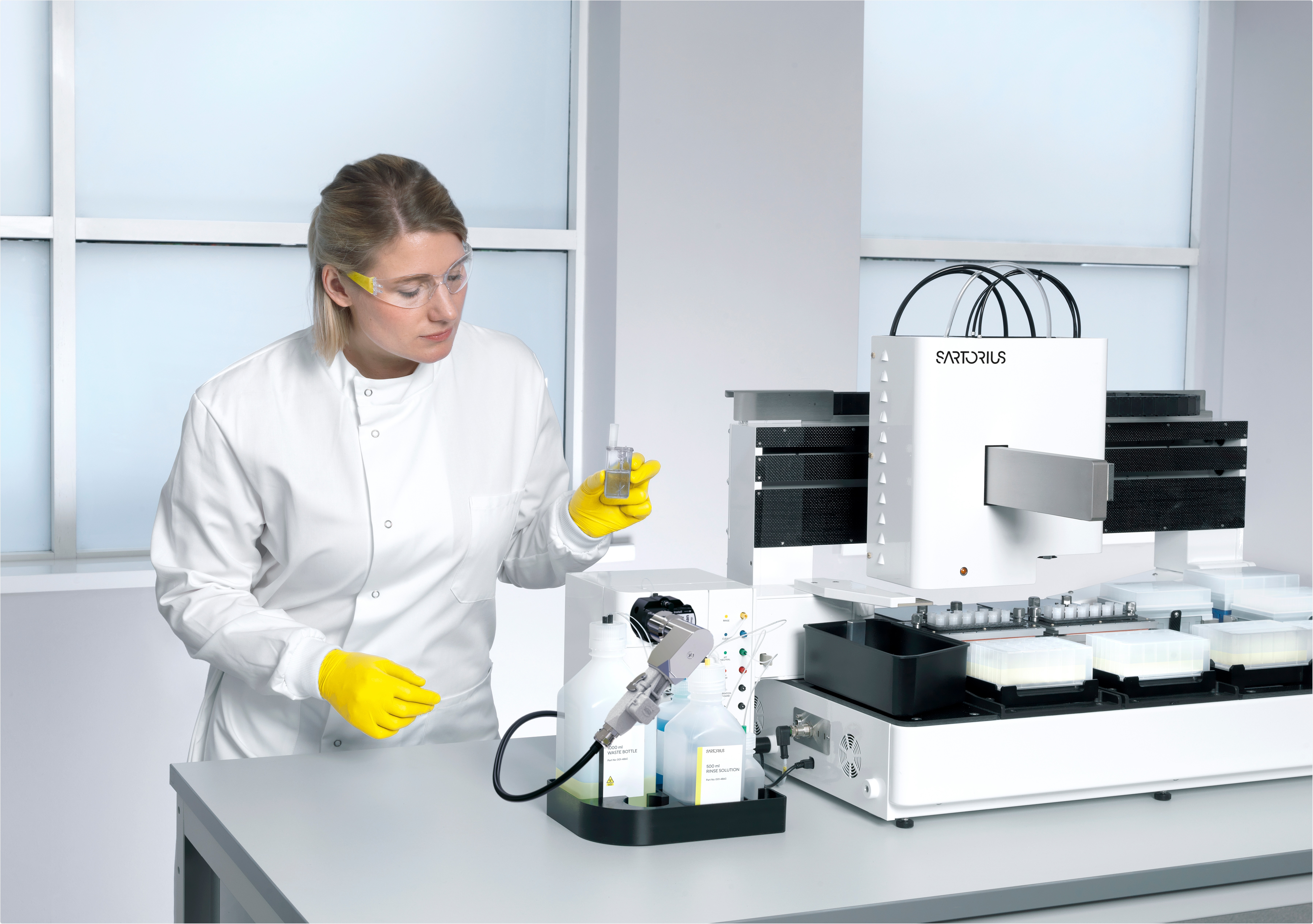 insights from industryJustin MorettoLife Science Product Marketing ManagerKaiser Optical Systems, Inc., an Endress+Hauser company
insights from industryJustin MorettoLife Science Product Marketing ManagerKaiser Optical Systems, Inc., an Endress+Hauser companyCan you explain how spectroscopy can be used for bioprocessing?
I can certainly offer some common examples, but there are too many applications to list here, and users are still finding exciting new uses every year.
The most common use for Raman spectroscopy in bioprocessing is as a real-time monitoring tool for chemical species of interest for that unit operation. Sometimes this means quantifying various amino acids during a media prep operation, metabolites such as glucose and lactate in cell culture operations or protein aggregation in purification steps.
The great value comes from its ability to non-destructively quantify multiple analytes with a single probe, which provides orders of magnitude greater data resolution, and therefore much greater process characterization capabilities.
For scientists and engineers who are interested in process optimization and automation, Raman spectroscopy can be used to drive feedback loops using real-time quantification capabilities. This often manifests as on-demand feeding for “continuous” batch-fed and perfusion cultures, but it can also be used for downstream applications, such as protein concentration loops and column breakthroughs.
What advantages does the process have over other potential bioprocessing measurement techniques?
As Raman spectroscopy utilizes light as its primary analysis medium, it is not subject to the material degradation that all enzymatic measurement regimes experience, so the measurements have greater long-term precision with less instrument drift, as well as no consumable costs. Since the measurements are done in situ, the material does not need to be destroyed to measure it, which also means that significantly more data can be collected for every process.
As for spectroscopic techniques, Raman is uniquely suited for bioprocessing due to its relative insensitivity to water, which is critical for devices working with aqueous solutions.

Endress+Hauser’s Raman Rxn-46 probe compatible with Sartorius BioPAT® Spectro for Biostat STR® systems. Image credit: Endress+Hauser
What are some of Raman bioproduction solutions’ main bioprocessing products?
Endress+Hauser offers a wide range of bioprocessing-specific hardware tailored to meet varied demands across an entire bioprocessing organization. The Raman Rxn platform is the heart of our Raman offerings.
The Raman Rxn2 and Rxn4 base analyzer units can be paired with the RamanRxn probe for use with autoclavable systems, the bIO-PRO probe for systems compatible with steam sterilization, the bIO-PRO, KS probe which provides native compatibility with Sartorius BioPAT® Spectro for Ambr® and Biostat STR® systems, and even a Raman accessory optic specific for single-use operations.
Endress+Hauser’s Raman Rxn-46 probe compatible with Sartorius BioPAT® Spectro for Ambr® systems. Image credit: Endress+Hauser
What are the advantages that Raman-based Process Analytical Technology (PAT) delivers in biopharma?
Simply put – the Raman-based PAT has excellent reliability, increased efficiency, and delivers safer products.
Can you explain some of the problems that researchers and laboratories will be able to overcome when they switch to a Raman Spectroscopy system?
Off-line sample analysis is a significant data bottleneck that requires a great deal of human capital as well as instrument time before process decisions can be made. The nature of these bottlenecks is so engrained that process inefficiencies have been built in to allow for them, leading to challenging upper limits on efficiency. Real-time feedback and control provide scientists and engineers with the levers needed to increase process efficiency and even target direct improvements in product quality metrics.
What are the main elements of the Raman system?
The components of a Raman system are deceptively simple: a monochromatic light source (laser), light delivery and retrieval mechanism (fiber-optics, sterile boundary window), notch filter (removes the much more intense laser light), diffraction grating (which separates the light based on energy) and a CCD (camera).
Like so many things, every link in the chain has to be built to exacting standards for the system to perform at its peak, and when all of the components are of high-quality and configured properly, the result is greater than the sum.
Can you explain some of the key moments in Raman’s twenty-year journey from early feasibility studies to a wealth of modern publications?
From about 2007 to 2012, some of the first feasibility studies were conducted for in situ Raman for cell culture, with results appearing in early industry publications. Then, bioprocess-specific use of Raman technology increased among early adopters in the industry. This led to an emergence of publications about Raman technology’s robustness for scale-up and feedback control starting around 2013.
By 2015-2016, we started to see a dramatic increase in industry adoption in the use of Raman for both cell culture and fermentation as Raman product technology for bioprocessing improved. From that point forward, Raman was proven in cGMP, cross-scale and cross-platform models and bioprocess control. Between 2018 and 2021 was really when we saw an increased focus on data analytics, advanced process control and new Raman applications, such as high throughput and automated modeling, single-use, perfusion, cell & gene therapies, downstream and more which has resulted in a wealth of modern publications.
Can you describe the technology that these systems are designed to integrate with and why these integrations are beneficial to the user?
The most critical integration feature is the use of OPC for data transfer since this is the industry standard for all modern hardware installations. Endress+Hauser's Raman systems can easily integrate with any OPC-enabled hardware. This includes integrating directly with a user’s DCS interface or sending data to a data historian. With direct integration with a DCS, users have the ability to drive feedback logic that is natively supported in the DCS software, without any additional learning curve or software packages.
The Raman data can also be used to trigger alerts and alarms at critical process points or in the event of a process deviation. The key to the integration options is that they make the process simple and straightforward.

Image credit: Endress+Hauser
Can you describe what future technological improvements will make Raman technologies even more appealing to the end-user?
I expect to see new innovations in Raman technology to enable even faster, easier and more robust model building. For example, integrating Raman spectroscopy into Ambr® is an exciting new development that supports this and enables companies’ QbD and PAT efforts early on in product and process development.
I expect to see additional integrations that improve ease-of-use for scale-up, downstream operations, advanced process control, single-use manufacturing and more.
If you could tell potential users one thing about Raman technologies to influence their switch to your platform, what would that be?
I would encourage potential users to read through some peer-reviewed articles to see how other bioprocessing organizations are currently using our equipment. I believe in the products that we sell, but I don’t expect industry professionals to take my word for it. Instead, I would point to the string of successful research, development and cGMP implementations we complete every year. I do my best to keep a current list of customer citations, which of course I would be very happy to share and discuss with anyone who is interested.
About Justin Moretto
Justin Moretto is currently the Life Science Product Marketing Manager at Kaiser Optical Systems, Inc., an Endress+Hauser company. Before taking the role as product marketing manager, Justin served as an application scientist at Kaiser Optical Systems for several years. Earlier in his career, Justin spent ten years working in the biotech industry, including seven years with Biogen as part of the PAT initiative. He holds a master’s degree in Biotech Enterprise Management from Johns Hopkins University and a Master of Science Degree in Analytical Chemistry with a focus in protein characterization from North Carolina State University.

About Kaiser Optical Systems, Inc.
Kaiser Optical Systems, Inc. (Kaiser), an Endress+Hauser company, is the global leader in Raman spectroscopic instrumentation for laboratory, process, and manufacturing environments. Our solutions harness the powerful analytical information of Raman Spectroscopy to help our customers understand, measure, and control their chemistries.
As a trusted partner in Raman for over 30 years, Kaiser has a long history in production, including GMP manufacturing, with many proven successes. Our unmatched expertise, high quality solutions, and exceptional customer service sets Kaiser far above any other Raman option in the marketplace. Kaiser Raman technology is currently used throughout the chemical, food and beverage, oil and gas, pharmaceutical, and biopharmaceutical industries to optimize process efficiency and deliver quality products. Kaiser’s manufacturing and headquarters facility is in Ann Arbor, Michigan.
Sponsored Content Policy: News-Medical.net publishes articles and related content that may be derived from sources where we have existing commercial relationships, provided such content adds value to the core editorial ethos of News-Medical.Net which is to educate and inform site visitors interested in medical research, science, medical devices and treatments.
